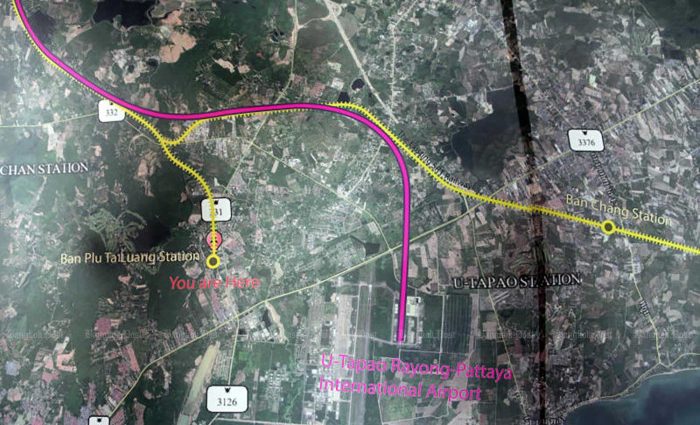
PUBLISHED : 1 Oct 2023 at 13:25
RAYONG: The Eastern Economic Corridor Office of Thailand (EECO) has approved a feeder electric train linking with a high-speed rail link between the capital’s airports and U-Tapao airport in the high-speed rail project’s second hearing.
The public hearing panel was recently organised by EECO in Ban Chang district and joined by local administration representatives with a main focus on a development plan for feeder transport for the high-speed railway.
According to Karn Chaloemwongphan, EECO’s traffic and transport model expert, two main railway systems were proposed on the hearing panel: a road-tyre-based system and a fixed guideway-based system.
The panel had agreed on the second method, with two types of train and railway systems to consider. According to Mr Karn, they were a conventional rail-based system, such as Light Rail Transit (LRT), trams, or tram-trains, and a contemporary transit system, such as monorails, automated guideway transits (AGT), and urban maglevs.
Three rail routes for the feeder train were also proposed. They were the northern railway from the EEC-Sri Racha high-speed station in Chon Buri; the western railway from the EEC-Pattaya high-speed station, and the southern railway from the EEC-U-Tapao high-speed station.
Results pointed to the southern railway as the most suitable area due to engineering, economic, and environmental factors. This area will be a pilot for further study as well as the fundamental design of the project, said Mr Karn.
Mr Karn said the feeder train was expected to be a flyover of at least 20 kilometres in length, covering areas between Bang Lamung and Sattahip districts in Chon Buri and Ban Chang district in Rayong.
It will start at the EEC and become a flyover at Highway No.331 (located near Huai Yai police station). The flyover will go along Highway No.7 (Khao Chi Chan and Khao Chi Oan) and finish at Highway No.3, or Sukhumvit Road.
After the hearing, EECO and the project’s consultant will gather comments to improve the feeder train construction, details of which will be proposed at a later hearing.
The 1.92-kilometre high-speed rail link will handle the expected surge in traffic volume caused by U-Tapao Airport’s importance to the EEC. It will be promoted as another international airport for commercial flights in 2025 when the rail link finally opens.

